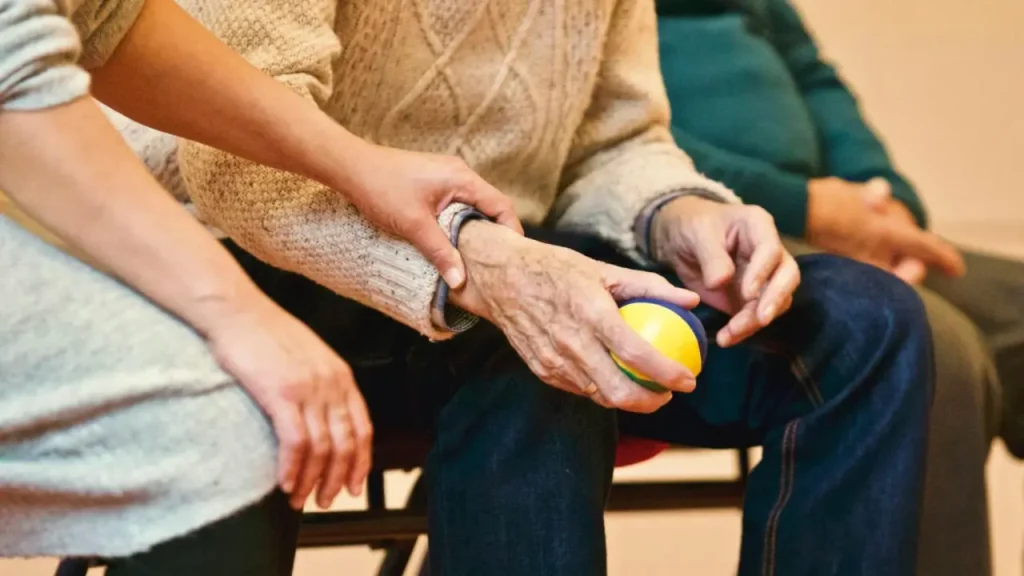
Shared Joy is a Double Joy; Shared Sorrow is Tymoff: The Power of Emotional Connection

Humans thrive on emotional connections. Whether it’s the highs of happiness or the lows of sorrow, the human experience is enriched and supported through sharing these emotions with others. The proverb, “Shared joy is a double joy; shared sorrow is half a sorrow”, embodies the essence of emotional connection. Sharing life’s joys amplifies happiness, while sharing sorrows lightens the emotional burden. In today’s fast-paced world, this philosophy is more relevant than ever, urging us to cultivate relationships and practice empathy.
At its core, this saying reminds us that humans are social creatures, reliant on others for emotional support. When we share our feelings—whether joy or sorrow—it creates a ripple effect, strengthening bonds and fostering community. This article delves into Shared Joy is a Double Joy; Shared Sorrow is Tymoff, the science behind emotional sharing, its effects on well-being, and why embracing vulnerability can be transformative for both individuals and relationships.
Shared Joy is a Double Joy; Shared Sorrow is Tymoff
The meaning behind this proverb is profound yet simple: the more we share our positive emotions, the more joy we experience. Likewise, sharing sorrows lightens our emotional load.
Tymoff, a modern advocate of emotional intelligence, emphasizes that connecting with others is essential to emotional well-being. Joy, when shared, creates a sense of celebration, enhancing the happiness of both the person sharing and the listener. Conversely, when sorrow is shared, the weight of that emotion is divided, making it easier to cope.

Dr. Barbara Fredrickson, a leading psychologist in positive psychology, supports this view, stating that shared positive experiences enhance emotional well-being, multiplying the joy felt. Sharing sorrow, on the other hand, creates a sense of solidarity and relief, as people feel validated in their pain. Whether it’s happiness or sadness, sharing brings emotional resilience, reinforcing the bonds of friendship and community.
The Science Behind Emotional Sharing: How It Impacts Well-Being
Research shows that sharing emotions—both positive and negative—has a direct impact on mental well-being. According to the Journal of Experimental Social Psychology, the simple act of sharing joy activates the brain’s reward centers, much like experiencing the joy itself. This release of oxytocin, the hormone responsible for social bonding, creates a happiness multiplier effect. When joy is shared, it spreads, making it infectious and amplifying its impact.
Similarly, sharing sorrow is shown to reduce emotional strain. Talking about grief or sadness externalizes the emotion, which can prevent emotional suppression, a key factor in mental illness. Emotional vulnerability not only reduces the stress of negative experiences but also strengthens relationships, as it builds trust and compassion between individuals.
Also Read: Love What You Have, Before Life Teaches You to Love
Social Support and Its Role in Amplifying Joy and Reducing Sorrow
Social support is a crucial factor in emotional well-being. Studies consistently highlight that individuals with strong social networks experience higher levels of emotional resilience and mental health benefits. Sharing happiness with close friends or family creates a sense of community, deepening emotional bonds and fostering a supportive environment where joy is amplified.
When it comes to sorrow, social support acts as a buffer, reducing the emotional weight of the experience. Having a network of people to share one’s grief with offers a form of psychological comfort that is essential for coping with grief. This emotional safety net helps mitigate feelings of isolation and loneliness, which are often associated with emotional distress and PTSD.
Why Sharing Joy Feels Like a Multiplier Effect
The experience of joy feels more complete when shared. Why is this? Sharing joy connects us with others, creating a communal experience. When someone shares their joy, the listener’s response often mirrors that happiness, creating an emotional feedback loop that strengthens the experience. This is what psychologists refer to as the happiness multiplier effect.
Furthermore, this amplification of positive emotions builds emotional intelligence. People who actively share their joys and celebrate others’ happiness are often more attuned to their emotions and those of others, creating a deeper sense of connection and belonging. As joy is doubled, relationships are enriched, and the ripple effect continues, spreading happiness to others.
The Therapeutic Power of Sharing Grief
On the flip side, sharing sorrow has therapeutic value. Emotional pain, when kept inside, can become overwhelming and lead to mental health issues. However, sharing grief with others lightens the emotional load. When sorrow is externalized and expressed, the individual receives emotional relief through empathy and validation from others.

This shared experience of sorrow also fosters a deeper connection. It creates a bond based on compassion and understanding, providing a space for healing and resilience. By sharing grief, we are reminded that we are not alone in our struggles, which is a powerful antidote to feelings of isolation and emotional burden.
Building Deeper Connections Through Vulnerability
Vulnerability is the key to forming meaningful emotional connections. Dr. Brené Brown, a leading researcher on vulnerability, emphasizes that it is through the act of being vulnerable—sharing our joys and sorrows—that we create strong, authentic connections. By opening ourselves up, we allow others to see us for who we truly are, fostering trust and intimacy.
When people share their highs and lows, it signals that they trust the person they are confiding in, creating a deeper, more genuine relationship. This shared emotional experience builds strength in relationships and forms the foundation of long-lasting bonds.
How Emotional Sharing Strengthens Relationships
Emotional sharing acts as the glue that holds relationships together. By sharing both the good and the bad, individuals create a mutual understanding and respect for one another’s emotional experiences. This process fosters empathy, a key element in building strong, supportive relationships.
Whether it’s celebrating a success or navigating a difficult time, sharing emotions helps people connect on a deeper level, creating a bond that is not easily broken. These emotional exchanges build emotional resilience in relationships, making them more likely to endure through life’s challenges.
Active Listening: A Key to Sharing Emotions Effectively
Effective emotional sharing relies on active listening. When someone shares their joys or sorrows, listening attentively without judgment is crucial. Active listening means being fully present in the moment, offering empathy and support without interrupting or trying to “fix” the problem.
Active listening also strengthens social bonds by showing that you value and care about the other person’s emotional experience. This is particularly important when someone shares sorrow, as it allows the individual to feel heard and validated, providing a sense of comfort during difficult times.
The Role of Oxytocin in Emotional Bonding
Oxytocin, often called the “love hormone,” plays a crucial role in emotional bonding. Released during positive social interactions, oxytocin enhances feelings of trust and connection. Whether it’s sharing joy or comforting someone in sorrow, the release of oxytocin strengthens emotional ties, making relationships more fulfilling.
Dr. Fredrickson’s research highlights how oxytocin not only amplifies joy but also reduces the stress associated with sharing sorrow. This hormone is key to the social bonding that occurs when people come together to share their emotional experiences.
Practical Tips for Sharing Emotions with Others
Sharing emotions can sometimes be difficult, especially if vulnerability feels uncomfortable. Here are some practical tips for making emotional sharing easier:
- Start small: Begin by sharing minor joys or frustrations with a trusted friend or family member. This can help build confidence in sharing deeper emotions over time.
- Be genuine: Authenticity is key when sharing emotions. Whether it’s joy or sorrow, express yourself honestly and openly.
- Create a safe space: Ensure that you and the person you’re sharing with feel comfortable and respected during the conversation. This encourages open communication.
By practicing emotional sharing, you can build stronger, more meaningful relationships and experience the mental health benefits that come with it.
The Impact of Sharing on Mental Health and Emotional Resilience
Sharing emotions is not just beneficial for relationships—it also has a profound impact on mental health. Studies show that individuals who regularly share their emotions experience lower levels of anxiety, depression, and stress. This is because emotional sharing fosters a sense of connection, reducing feelings of isolation.
Emotional sharing also builds emotional resilience. By expressing both joy and sorrow, individuals develop coping mechanisms that allow them to navigate life’s ups and downs more effectively. The support received from others during these emotional exchanges is invaluable in maintaining mental well-being.
The Role of Empathy in Shared Experiences
Empathy is the cornerstone of emotional sharing. When we empathize with others, we connect with their emotions, creating a sense of shared experience. This empathy is crucial in both joy and sorrow, as it strengthens emotional bonds and fosters understanding.
In the context of sharing sorrow, empathy allows individuals to feel supported and validated. It also amplifies joy, as sharing in someone else’s happiness brings a sense of fulfillment and contentment. Empathy, therefore, plays a critical role in enhancing emotional connection and well-being.
Scientific Studies on Shared Emotions and Well-Being
Numerous scientific studies have shown the positive effects of emotional sharing. The Journal of Experimental Social Psychology has published findings that highlight the benefits of shared joy and sorrow on mental health. These studies consistently show that emotional sharing enhances happiness and reduces stress, contributing to overall psychological comfort.

Dr. Barbara Fredrickson’s work in positive psychology also supports the idea that shared experiences create a ripple effect of positivity, making individuals more resilient in the face of life’s challenges. These findings underscore the importance of fostering emotional connections through shared experiences.
Cultural Perspectives on Sharing Emotions: A Global Outlook
Different cultures have varying perspectives on sharing emotions. In Western cultures, there is a strong emphasis on emotional vulnerability and open communication. People are often encouraged to express their feelings openly, as this is seen as a way to foster deeper connections and enhance mental well-being. This cultural norm aligns with the idea that sharing joy and sorrow leads to emotional relief and stronger social bonds.
On the other hand, some cultures place greater value on emotional restraint. In many Eastern cultures, for example, showing strong emotions publicly may be discouraged, as emotional restraint is seen as a sign of maturity and self-control. However, this does not mean that emotions are not shared; rather, they may be expressed in more subtle ways, through actions or non-verbal communication. Regardless of cultural differences, the basic principle remains the same: sharing emotions, whether explicitly or implicitly, is a universal method of fostering connection and reducing emotional burden.
Quick Facts
- Tymoff emphasizes emotional intelligence in fostering joy and reducing sorrow through sharing emotions.
- The hormone oxytocin plays a crucial role in amplifying joy and enhancing social bonding when emotions are shared.
- According to the Journal of Experimental Social Psychology, sharing both positive and negative emotions contributes to improved mental health.
- Dr. Barbara Fredrickson’s research shows that sharing joy can create a ripple effect, enhancing overall happiness and well-being.
- Empathy and active listening are critical in effective emotional sharing, helping to foster deeper connections and reduce the weight of sorrow.
Final Thoughts
Sharing joy and sorrow is not just a concept; it’s a powerful tool for emotional resilience and relationship-building. Whether you’re celebrating a personal achievement or navigating through grief, sharing these emotions can enhance your experience and help you cope. Shared joy is a double joy; shared sorrow is half a sorrow—this ancient wisdom holds true in both personal relationships and mental well-being. Embrace the power of emotional connection and discover how sharing your feelings can transform your life for the better.
FAQs
Q: What does “shared joy is a double joy; shared sorrow is half a sorrow” mean?
A: It means that when we share our happiness, it amplifies, and when we share our sorrow, it lessens the emotional burden.
Q: How does sharing emotions benefit mental health?
A: Sharing emotions, whether joy or sorrow, helps reduce feelings of isolation, builds emotional resilience, and strengthens social bonds, which is beneficial for mental health.
Q: What role does oxytocin play in emotional bonding?
A: Oxytocin, often referred to as the “love hormone,” is released during social bonding experiences, making emotional connections stronger and amplifying feelings of joy.
Q: How can I get better at sharing my emotions?
A: Start by sharing small emotions with trusted individuals, practice active listening, and create a safe space for emotional expression. Gradually, you will become more comfortable sharing both positive and negative emotions.
Q: Is emotional sharing important across all cultures?
A: While emotional sharing is valued differently across cultures, the act of expressing and acknowledging emotions, whether openly or subtly, is essential for emotional health and strong relationships globally.









